Up until now, we were living in blissful ignorance.
Sure, we’d tried (and even tried making) what we considered to be “jerk chicken,” but it’s very surprising – even a bit shocking – to see how far off we were.
Thankfully, we’re now a little closer to being in the know, and we’re very glad for it.

The History of Jerk
Besides its phenomenal taste, jerk chicken (and jerk in general) is very deeply interwoven into to the entirety of Jamaica’s history. Each different element of the practice can hearken back to a specific chapter in the island’s history, making jerk chicken a recipe with a truly intricate linkage to the national identity.
The Arawaks and Jerking
First, there’s the actual cooking style of jerk, a style that dates back to the island’s original Arawak inhabitants. The Arawak people started as an indigenous Amerindian group originally in South America but eventually also migrated and settled into many of the Caribbean Islands. Even today, despite the direct Arawak ethnicity having been extinct since the 16th century, DNA testing has shown that populations like in Puerto Rico, Guyana, Jamaica and Suriname all retain a direct ancestry to the Arawaks.
The Arawaks first made it to the shores of “Xamayca” some ~2,500 years ago and brought with them a cooking technique that is familiar to more than just the Jamaicans. By smoking and drying meat over a slow fire, the Arawaks cooked meats into long-lasting strips of charqui, a common cooking technique in ancient Peru that we know modernly know as “jerky” around the world.
There is one distinguishing element to the Arawakan jerk cooking in Xamayca that few other places have: the pimento tree. The pimento tree is especially native to Jamaica and yields ever-fragrant allspice berries… never mind that the Spanish mistranslated the berries as “pimienta” peppercorns and hence gave the tree a misnomer for a name.
For jerk chicken and other recipes, cooking in this charqui style over a bed of smoldering pimento wood emanates special oils and flavors into the meats that are extremely difficult to replicate elsewhere.
Jerk Seasonings
The cooking style for jerk chicken is but one piece to the puzzle, however. To know more about why jerk chicken is seasoned the way it is requires fast forwarding a few centuries.
By 1494, the peaceful Arawak settlement of Xamayca was abruptly halted by Christopher Columbus. Upon receiving a tip from the Cubans of a “land of blessed gold,” Columbus landed on the shores of Jamaica on his second trip to the West Indies. With colonization and oppression in mind, what followed was a systematic decimation of the Arawak populations on Jamaica over the next few centuries.
As you might expect, it turned out to be a bad business move for the Spaniards to wipe out their entire labor supply. To remedy their mistake, the Spaniards captured, enslaved and transported West Africans to their colonies to keep their economic machine humming. In the case of Jamaica, many of the African slaves brought over were from Coromantee tribes of hunters.
Prior to slavery, the Coromantee had a particular method of heavily spicing their meats as a method of food preservation, and this particular method was brought over and gradually adapted to include various indigenous ingredients – the allspice berry being at the forefront.
Around 1655, the English waged a successful attack on Jamaica and their Spanish nemeses. As part of a retreat tactic, the Spanish freed all their slaves and fled to Cuba. These freed slaves – now called “Maroons” – fled to the mountains to prevent being re-enslaved by the English. It was in the mountains that they met the few remaining Arawak populations, and soon their intermingling merged both seasoning and charqui cooking style to create jerk chicken as we know it today.
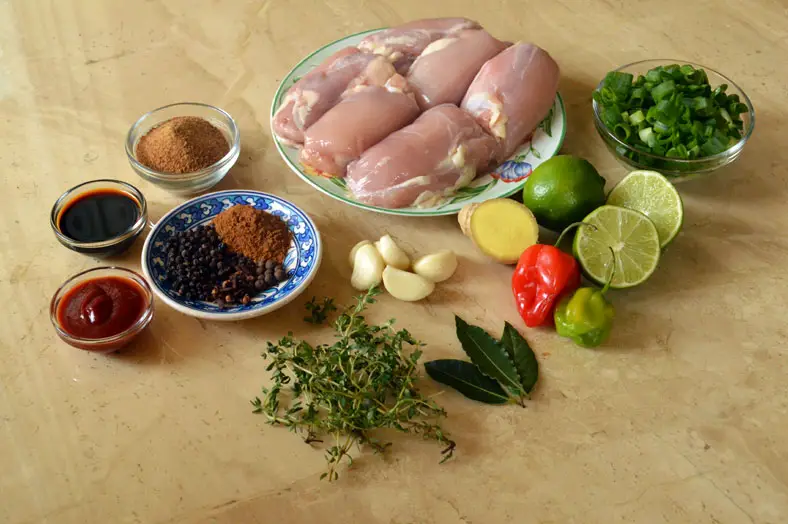
About The Jerk Chicken Recipe
Technically, there are many more types of jerk than jerk chicken. The seasoning and the cooking style works equally well on any sorts of meats, vegetables or even fruits. Jerk chicken is perhaps the most popular and recognizable form of this recipe, though.
Prior to cooking, the key lies in the marinade. The marinade itself requires 5 base ingredients in order to really be called jerk: allspice berries, thyme, scotch bonnet peppers (also known as habaneros), gingers and spring onions. You may like to add other ingredients like soy sauce or ketchup to your marinade, but those five particular ingredients are required for a true jerk chicken.
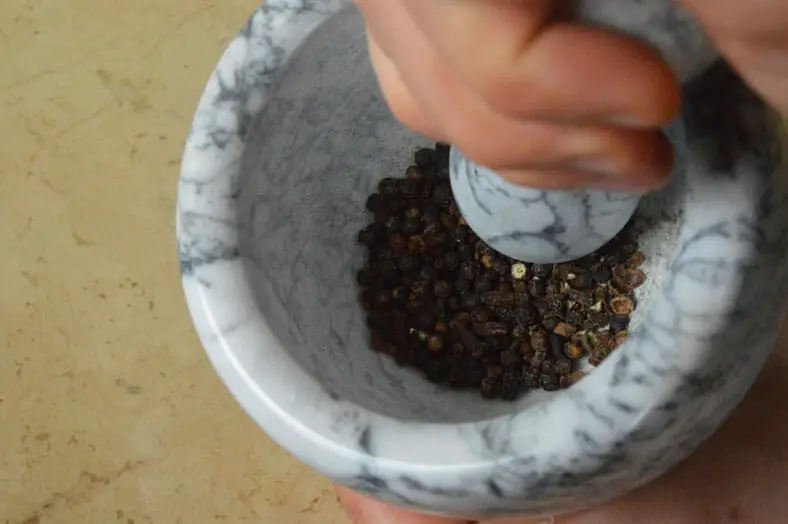
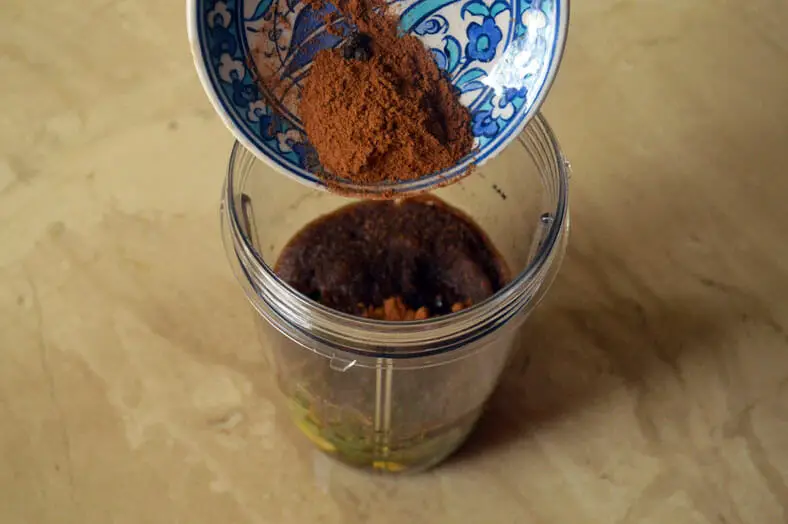

To make the marinade, it’s easiest to put all the ingredients into a food processor until you have a fragrant brownish paste with a thicker consistency. You can also use a mortar and pestle to create your jerk chicken marinade, but it’s slightly more time-consuming and effort-intensive than with a food processor or a blender.
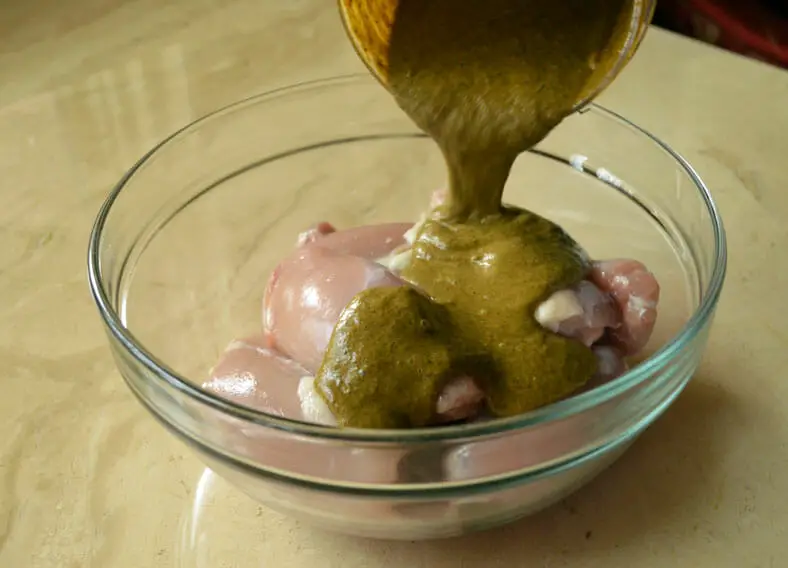
Once you have your marinade set, you’ll apply it to your meat/veggies/fruits. There are two suggestions we can lend here for best results. First, the concept of jerking (itself another verb) means to poke holes into your meats and to help the marinade flavors absorb deeper in. Regardless of for meats or anything else, jerking in this sense is very much a good idea.

Next, you’ll get best results for your jerk chicken if you let it sit in marinade for at least 12 hours. Longer is better here. If you can swing an overnight marinating, that would be fantastic. It’s not necessary, but it’s certainly well worth it.
How to Cook Your Jerk Chicken
Once your jerk chicken has had a chance to marinade and meld flavors, you simply put it on your grill.

Technically, this isn’t the most traditional and best cooking style to use. As we mentioned before, the jerk cooking style in its most traditional and native form involves roasting your jerk chicken over smoldering pieces of the pimento tree.
Unfortunately, since it’s a bit difficult and perhaps un-pragmatic to procure pieces of pimento tree outside of Jamaica, grilling your jerk chicken is a good enough viable alternative. The key to your grilling is to cook the jerk chicken over a tempered heat for longer, slower periods of time. You don’t want an unwieldy and highly intense flame, otherwise the outside will char too quickly before the inside has a chance to fully cook to the proper Jamaican standards.
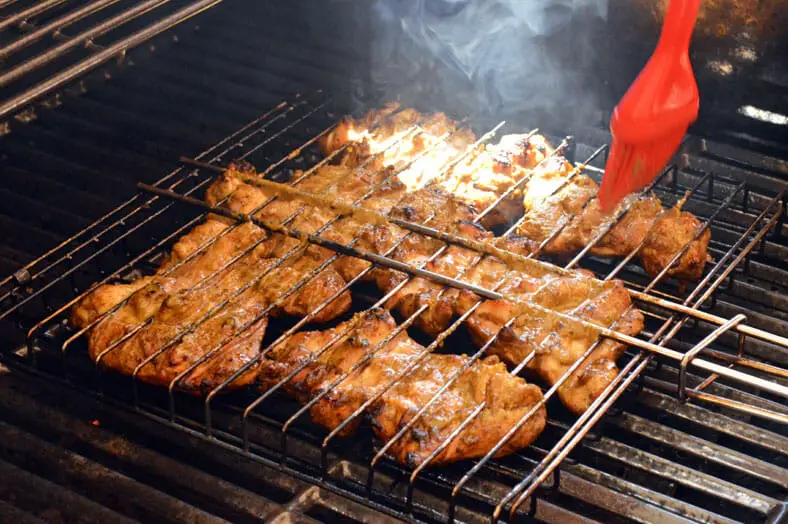
This was a mistake we made early on as well, but the goal is to actually slow-cook your jerk chicken until you get a darker pinkish color on the inside. Any signs of white meat and it’s not fully there, so take heed to keeping the heat low and letting it cook slow. Meanwhile, taking stock of the internal temperature is always a good idea (for this jerk chicken and really anything else).

Our Take on the Recipe
Admittedly, this was a recipe that required several different tests, especially since we were going up against our own preconceived notions. Good thing the end result is so tasty, which made prolonged testing really enjoyable.
Based off our original reference recipe, we did make a few substantial changes primarily in the marinade.
For one, we actually preferred marinade variations that used less distinctly sweet ingredients in it and instead those with a more “sweet savory” feel to them. Honey, for example, was swapped out for an all-natural ketchup, and the pineapple juice was omitted altogether.
Based on the recommendation of other recipes, we ended up aggregating and adding spice flavors like cinnamon, nutmeg and cloves to give a deeper dimension to the allspice-rooted sweeter flavor profile. To balance on the other side, then we added a greater proportion of freshly cracked black peppercorns. Finally, we added de-stemmed bay leaves and swapped regular sugar for coconut sugar.
In terms of the meat, while we opted to make jerk chicken instead of jerk pork (even though jerk pork/boar is technically “the original”), much of the cooking technique was the same. We did leave our jerk chicken on the grill for a tiny bit longer, but the cooking itself was straightforward enough to not require any other adjustments… outside of not using pimento tree wood, that is.
In all, this deep dive into jerk and making a truly authentic (or as close as possible) jerk chicken was exciting, enlightening and tastefully rewarding.
Enjoy!
How would you marinade your jerk chicken (or jerk anything else)? Comment below!



Using real pimento wood and leaves makes all the difference in the finished product. The smoke adds so much to the flavor profile. You can find pimento wood from the only certified company to import this rare commodity to the USA pimentowood.com They have been around since 2006 and I have used them personally and in my restaurants. Their Spur Tree jerk marinade – also made in Jamaica – is a good alternative if you don’t want to make your own.
Jodi, this is so awesome… Thank you so much for sharing this! This will really be a gamechanger for our next round of jerk
I don’t think I’ve ever had jerk chicken though I’ve heard of it. Looking at this delicious chicken I think I ought to remedy it soon! Love to use cinnamon, cloves and nutmeg on seasoning my chicken dishes, too. 🙂
Haha it’s certainly something that would be worth remedying, Manila Spoon! The seasoning was our favorite part as well.. such a diverse taste profile
Wow you did an awesome job. I’m Jamaican and really love your adaptations especially with the allspice and coconut. Brings back memories!
Michelle, that’s so amazing to hear, thank you so much for the compliment (and validation)! We’re glad the adaptations still kept it close to the real deal. You know.. minus the pimento wood and all 🙂
I’ll admit that the jerk chicken I had most recently was at Nationals ballpark – and it was delicious. Definitely slow roasted, though I can’t vouch for whether the sauce was authentic. As always, I’ve learned so much from your explanation and love your adaptation of the recipe you used as a template. Just one (very picky) question – given that you pointed out how wise it is to check the internal temperature of your cooked meat. The recommended internal temp for cooked chicken (according to USDA) is 165 degrees, but your photo appears to show a temp over 200 degrees. Was that deliberate or just the difficulty of slow roasting on an urban barbecue?
Wow.. amazing that you were able to notice that, Laura. Right after we took that particular set of pictures with the meat thermometer in, we noticed that the thermometer had poked out slightly on the other side and was reading the temperature of the grate and/or grill heat.
Since we used chicken thighs (darker meat) for our particular recipe, we did go above the minimum threshold of 165 to about ~175 before taking the chicken off the grill. Including another 5 degrees give or take that they gained while “cooking off heat,” and the internal temp of our finished chicken was around 180 degrees.
Even though slightly higher than normal, between the juiciness of thigh meat and the thick and wet composition of the marinade, we found the doneness and texture of our chicken to be just right. Since we might have quirkier preferences than most, though, that’s why we’d totally suggest everyone use a meat thermometer 🙂